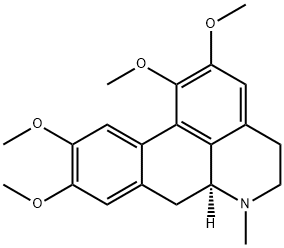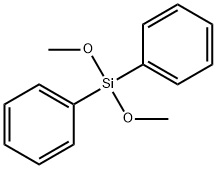Papaverine hydrochloride , >=99% , 61-25-6
Synonym(s):
6,7-Dimethoxy-1-veratrylisoquinoline hydrochloride
PRODUCT Properties
| Melting point: | 226°C (dec.) |
| storage temp. | Amber Vial, Refrigerator |
| solubility | H2O: 25 mg/mL |
| form | powder |
| color | white |
| PH | pH (20g/l, 25℃) : 3.0~4.0 |
| Water Solubility | freely soluble |
| Sensitive | Light Sensitive |
| Merck | 14,7019 |
| BRN | 3921435 |
| Stability: | Stable, but may be light sensitive. |
| CAS DataBase Reference | 61-25-6(CAS DataBase Reference) |
| EPA Substance Registry System | Papaverine hydrochloride (61-25-6) |
Description and Uses
Papaverine Hydrochloride, USP, is the hydrochloride of an alkaloid obtained from opium or prepared synthetically. It belongs to the benzylisoquinoline group of alkaloids. It does not contain a phenanthrene group as do morphine and codeine.
Papaverine Hydrochloride, USP, is 6,7-dimethoxy-1-veratrylisoquinoline hydrochloride and contains, on the dried basis, not less than 98.5% of CHNO.HCI. The molecular weight is 375.85. The structural formula is as shown.
Papaverine Hydrochloride occurs as white crystals or white crystalline powder. One gram dissolves in about 30 mL of water and in 120 mL of alcohol. It is soluble in chloroform and practically insoluble in ether.
Papaverine Hydrochloride Injection, USP, is a clear, colorless to pale-yellow solution.
Papaverine Hydrochloride, for parenteral administration, is a smooth-muscle relaxant that is available in vials containing 30 mg/mL. Each vial also contains edetate disodium 0.005%. The 10 mL vials also contain chlorobutanol 0.5% as a preservative. pH may be adjusted with sodium citrate and/or citric acid.
Papaverine hydrochloride is as effective as sodium diclofenac for the short-term relief of acute renal colic pain and may be advantageous in patients with contraindications for nonsteroidal anti-inflammatory drugs. However, sodium diclofenac appears to provide a longer effective analgesia.
Papaverine hydrochloride belongs to the group of benzylisoquinoline alkaloid. It is obtained from opium poppy.
Papaverine hydrochloride has been used:
in oxygenated Krebs solution for tissue mechanics analysis
as a vasodilator in heparinized horse serum in tissue uptake technique
as an inhibitor of H-MPP+ uptake into stably transfected 293 cells expressing either extraneuronal monoamine transporter (EMT) human or EMT rat
Safety
| Symbol(GHS) |  GHS06 |
| Signal word | Danger |
| Hazard statements | H301 |
| Precautionary statements | P264-P270-P301+P310-P405-P501 |
| Hazard Codes | Xn,C,F |
| Risk Statements | 22-34-11 |
| Safety Statements | 22-45-36/37/39-26-16 |
| RIDADR | UN 1544 6.1/PG 3 |
| WGK Germany | 1 |
| RTECS | NW8575000 |
| F | 8 |
| TSCA | Yes |
| HazardClass | 6.1 |
| PackingGroup | III |
| HS Code | 29391900 |
| Toxicity | LD50 in mice, rats (mg/kg): 27.5, 20 i.v.; 150, 370 s.c. (Levis) |




